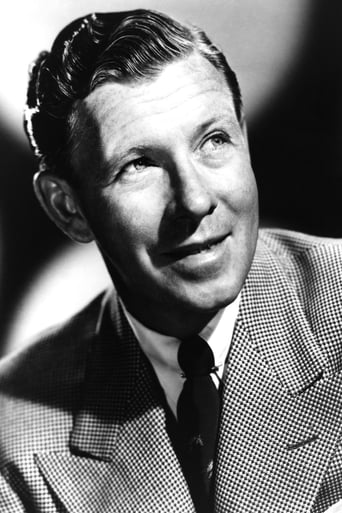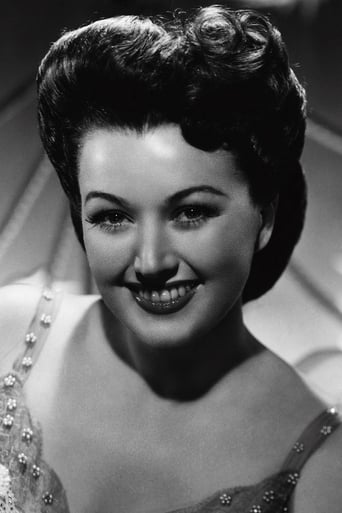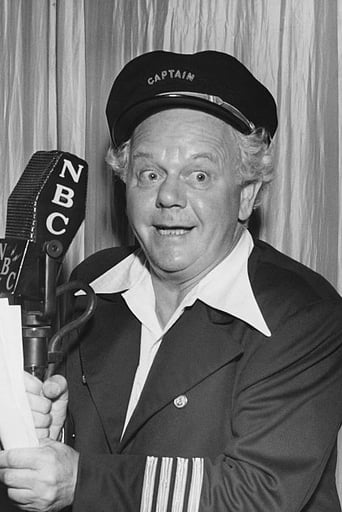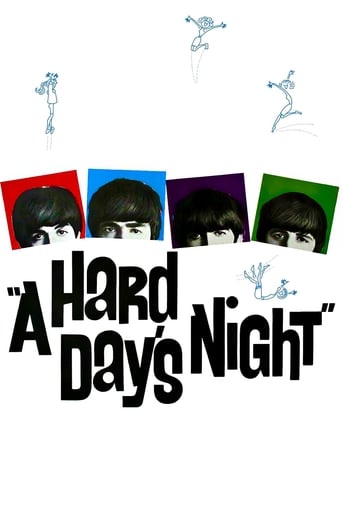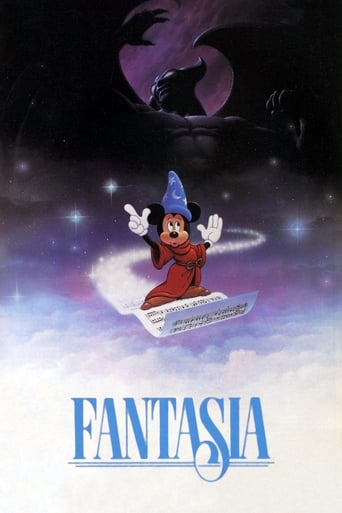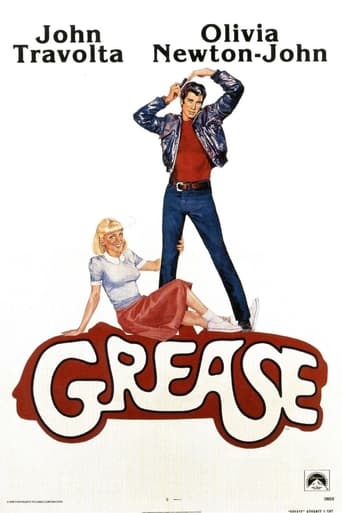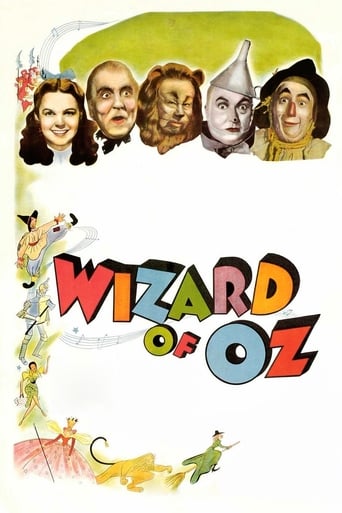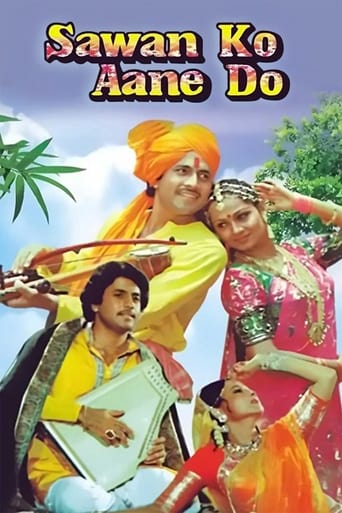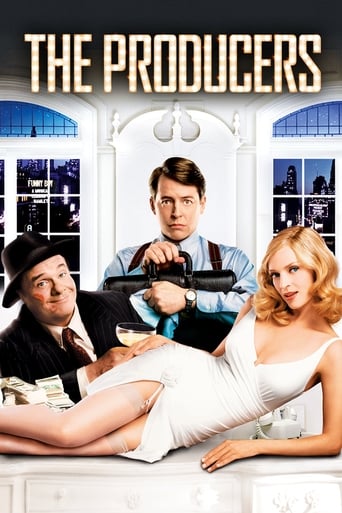
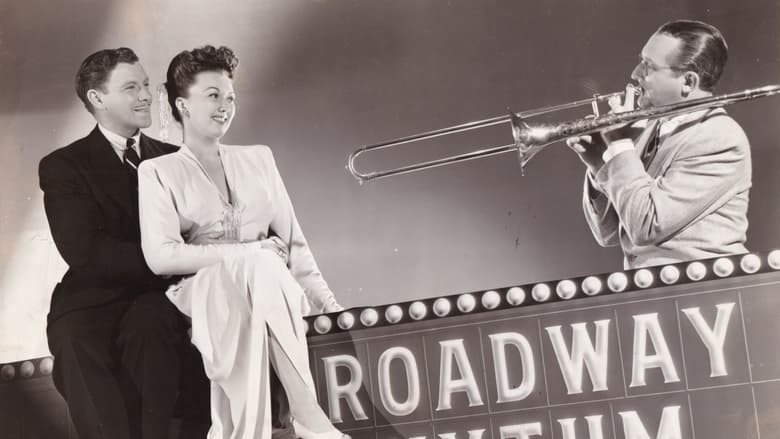
Broadway Rhythm (1944)
Broadway producer Johnny Demming is only interested in big-name talent and scoffs that his sister, father and other small-time talent could be used in a successful show.
Watch Trailer
Cast


Similar titles
Reviews
Very very predictable, including the post credit scene !!!
One of my all time favorites.
Although it has its amusing moments, in eneral the plot does not convince.
A movie that not only functions as a solid scarefest but a razor-sharp satire.
What's not to like about this film of the early musical genre? Although it lacks any very big star names for the time, it's a fun and entertaining variety show put on film. I'll give something more on that genre later. There are a lot of acts with a lot of talent – all very good. As most musicals of its genre to that time, it doesn't have much of a plot. And, it apparently underwent considerable changes in the original plans and casting. The hit songs are repeats from 1943 or earlier. But, I decided to chance it for two reasons. First, all the usual musicals of the early genre were of the stage revue type. They usually were very entertaining, and they often had performers that one may not have seen before. Second, the film has Tommy Dorsey and his orchestra. I will always try a movie that has any of the big name swing bands in it. I grew up with that music in the 1940s and 50s, before rock 'n roll; and the swing era had so many super talented musicians and bands that it showcased. Since it made the vocalists so popular, we've not had another time (other than classical or pops concerts) in which the music makers have been in the spotlight. And yet, swing era music lives on more than any other genre as background and theme music in movies. So, the cast in this one is quite good and all the technical aspects of the show are fine. Tommy Dorsey has a decent role with some good lines beside his playing and leading his band. I think he's one of the better of the band leaders at acting too. Lena Horne has two dazzling numbers in "Brazilian Boogie Woogie," and "Somebody Loves Me." Ginny Simms sings three romantic songs: "Amour, Amour," "Irresistible You," and "All the Things You Are." Gloria DeHaven has a couple of nice songs and dances. Walter B. Long is one of those unknowns who only appeared in two films – but here he does some dazzling dancing. Another person I might not have heard play was Hazel Scott, an outstanding classical and jazz pianist, born in Trinidad. She really makes the piano sing and dance in this movie. A number of other people sing and dance their way through this film with lots of fun. Of course, that includes George Murphy in the lead as Broadway producer Johnny Demming, and his pop, Sam, played by old-hand actor and terrific performer Charles Winninger. One other act in this film was very interesting and entertaining – again something one would only see in a stage revue or show like this. The Ross sisters – Aggie, Elmira and Maggie, do a nice song and dance number – I think it's called "Potato Salad" that include some fantastic acrobatics on their part. They all three must have been triple-joined. The popularity of this type of entertainment didn't wane for decades. But it took to new venues. In the 1950s, singing stars left the big bands that 'discovered' them, and began performing on their own. Some would develop their own bands. They toured the country giving concerts. They would usually include other performers and acts – to the give stars a break, if for no other reason. There were crooners like Bing Crosby and Dean Martin, jazz and blues singers like Louis Prima and Lena Horne, pop singers from the swing bands such as Frank Sinatra and Kay Francis, and rock and roll singers such as Elvis Presley and Jerry Lee Lewis. Early television began to sponsor variety shows, and helped discover more talents – or propel them into the spotlight and fame, as it did Elvis Presley. Ed Sullivan was the king of the variety and review type show on TV for many years. The Ed Sullivan Show (aka, The Toast of the Town) ran for 23 years from 1948 to 1971. It was the longest running variety show broadcast in history. That was a new venue for the revue type of shows. I enjoy all types of musicals, and think that the type of entertainment we see in films such as "Broadway Rhythm" just doesn't have a public venue in the 21st century. To see something like this film today, one would have to go to a concert and buy tickets that would cost in the range of $50 to $100 or more. But, here we have it on film, and can watch it in the uncrowded comfort of our homes. I highly recommend "Broadway Rhythm" just for the music and dancing entertainment alone.
It's surprising when you watch "Broadway Rhythm" that it's a full-color film. After all, the actors are mostly second-tier and the songs are, for the most part, awful and have nothing to do with the original Broadway production. So why film it in very expensive color film stock? Well, the answer probably lies in the star of the film--Ginny Simms. At the time this film was made, she and studio chief Louis B. Meyer were, according to IMDb, REALLY, REALLY good friends (wink, wink)! The fact that he'd spend so much studio money on color film is less of a surprise than the rest of the film being so incredibly poor.George Murphy plays a fat-headed Broadway producer. Although he's successful, he thinks he knows everything--and treats his father and sister like they are idiots. He never trusts them and is very controlling. This comes back to haunt him when he wants to produce his next play, as the actress he wants (Simms) is convinced by his father and sister to star in THEIR production--a sort of homage to the Mickey Rooney/Judy Garland films where they produce a HUGE mega-show supposedly in a humble barn.The film has a lot of glitz and I am sure a lot of money was spent making it. However, there are too many songs and too many bad songs--which makes the film drag. The only number I liked was the great piano piece. Otherwise, the songs were just limp and forgettable...well, except for the first number when Murphy danced with a woman who looked for all the world like a giant banana!! Very easy to avoid--very hard to watch to the end!
I've always enjoyed this movie and consider it one of the better musicals of the 1940's. There has been quite a bit of interest in the Ross Sisters as they have popped up all over the internet due to their performance in Broadway Rhythm. They were billed as Aggie, Maggie, and Elmira but their real names were Vicki, Dixie, and Betsy. They hailed from Colorado City, Texas and were daughters of dirt farmers during the dust bowl days. They trained on their own and began working theaters and fairs in the Midwest. Pooling their money, they bought a trailer and moved to New Jersey to a trailer park about a mile from the George Washington bridge on Route 6. They earned minor roles in a George Kaufman play, Count Me In, and went on to Broadway Rhythm then Pickadilly Hayride at the Prince of Wales Theater in London. They were summoned before the King and Queen for a command performance on Nov. 4, 1946.
Ginny Simms was at her best in acting and at the height of her beauty. The movie is worth watching just to see Ginny. Tommy Dorsey was great as usual, wish he had played more tunes. George Murphy, Ben Blue, Rochester, Lena Horne, Nancy Walker all helped make the movie very enjoyable.


